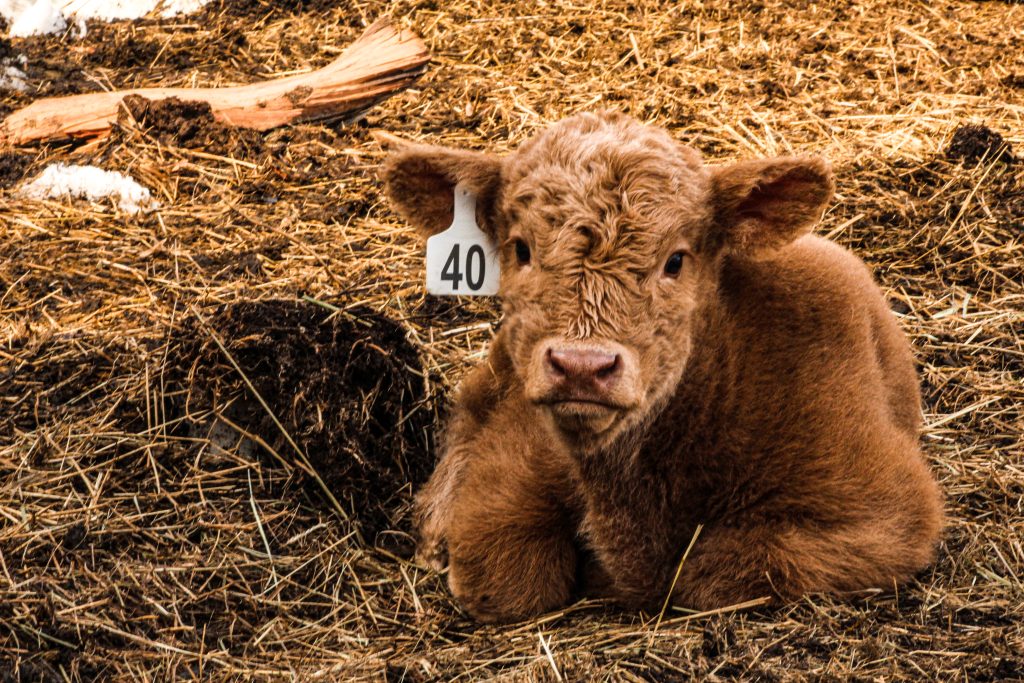Calving Ready: Tips offered to help producers prepare for calves to hit the ground

It’s never too early to prepare for calving season, and with spring-calving herds set to see babies over the next few months, producers should start planning ahead to help increase their chances of success.
To do this, University of Nebraska-Lincoln (UNL) Extension Beef Veterinarian Dr. Richard Randle encourages producers to ask themselves two simple questions – “Are my cows ready for calving? And, am I ready for calving?”
Preparing the cow herd
According to multiple sources, the first and arguably most important consideration when readying a herd for calving season is to ensure late-gestation nutritional requirements are met.
A separate UNL article, written by former UNL Master’s Student Alicia Lansford and UNL Extension Beef Cattle Reproductive Physiologist Rick Funston, notes, “Recent research has shown maternal nutrition during late gestation can have lasting impacts on calf health, growth and performance postnatally. These impacts can include improved weaning weights, yearling weights and marbling scores of progeny.”
Former South Dakota State Extension Cow/Calf Field Specialist Olivia Amundson further notes nutrition during the months leading up to calving is especially important because it impacts the rapidly growing fetus, mammary regeneration and synthesis of colostrum.
“Nutrition plays a large role in the duration of postpartum anestrous intervals, subsequent calving-to-conception intervals and overall pregnancy rate,” Amundson says. “Two- and three-year-olds are most vulnerable to nutritional needs during the last trimester due to continual growth of the dam and the calf in utero.”
“It is important to make sure these females are receiving adequate protein and energy,” she adds.
Lansford and Funston agree, noting cows should receive a diet with 7.9 percent crude protein (CP) and 54 percent total digestible nutrients (TDN).
“During winter months, forage CP and TDN values may fall below this requirement. Therefore, supplementation may be beneficial,” the UNL experts note. “Previous research has determined 0.31 pounds of supplemental rumen degradable protein per cow per day is adequate to meet cow maintenance requirements overwinter for a March-calving herd.”
Producer preparations
On the producer side of the equation, calving season preparations may be a little more extensive.
According to Randal and Amundson, producers should start by ensuring their calving facilities are in safe, working order.
“In general, nine to 10 months have passed since calving facilities were last used,” points out Amundson. “Time saving strategies prior to calving include a walk-through of the calving setup, inspecting all gates, pens and alleys for any damaged or broken items and making sure head catches and lighting are in working order.”
Amundson also notes cleanliness of calving facilities is critical to reduce the spread of disease, and suggests pressure washing or steam cleaning hard surfaces. She also encourages producers to lay down fresh bedding, while storing some close by to keep calves clean, dry and free from infection as they come and go.
Next, the two recommend assembling an obstetrical (OB) kit so producers have their supplies in one mobile and easy-to-access location.
Supplies they advise having on hand include disposable long-sleeve OB gloves, lubricant, paper towels, OB chains or straps and handles, a calf puller, halter and rope, oxytocin or epinephrine, iodine, sterile syringes and needles, frozen colostrum or colostrum replacer, an esophageal feeder, electrolytes, eartags and record keeping supplies.
Prior to calving, producers are also encouraged to revisit the stages of parturition and when to intervene, review their calving plans with employees and family members and visit with their veterinarians about proper protocol and a herd health plan.
“A new year brings new opportunities, and each year cow/calf producers look forward to a healthy fresh calf crop,” Amundson concludes. “Implementation of adequate calving facilities and equipment could set the stage for the best year yet, so be proactive and start thinking about calving season now.”
Hannah Bugas is the managing editor of the Wyoming Livestock Roundup. Send comments on this article to rounudp@wylr.net.





